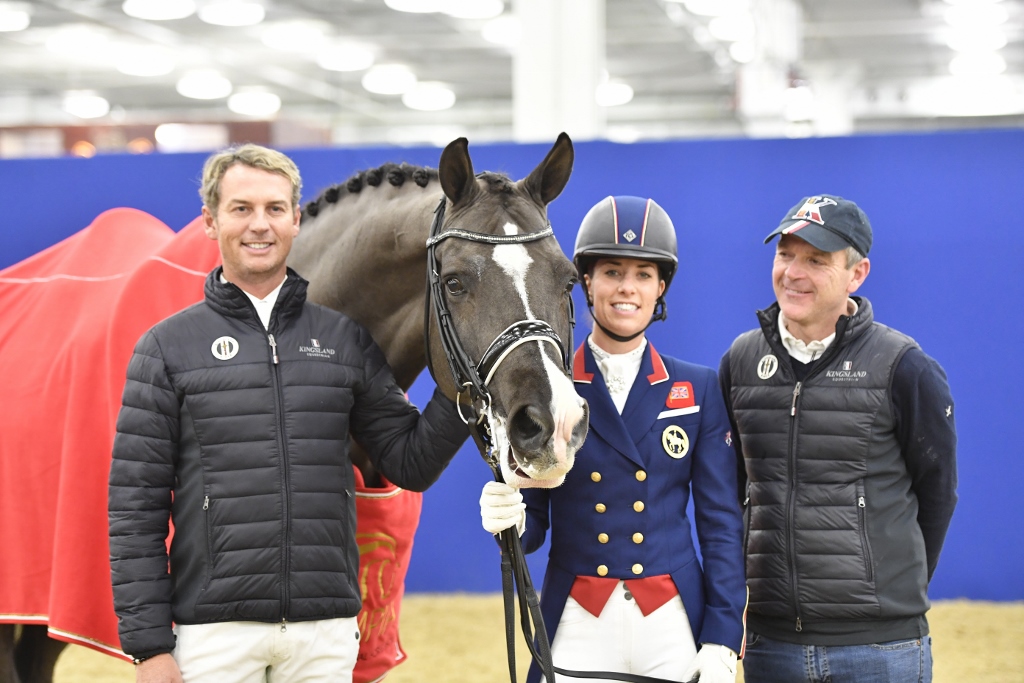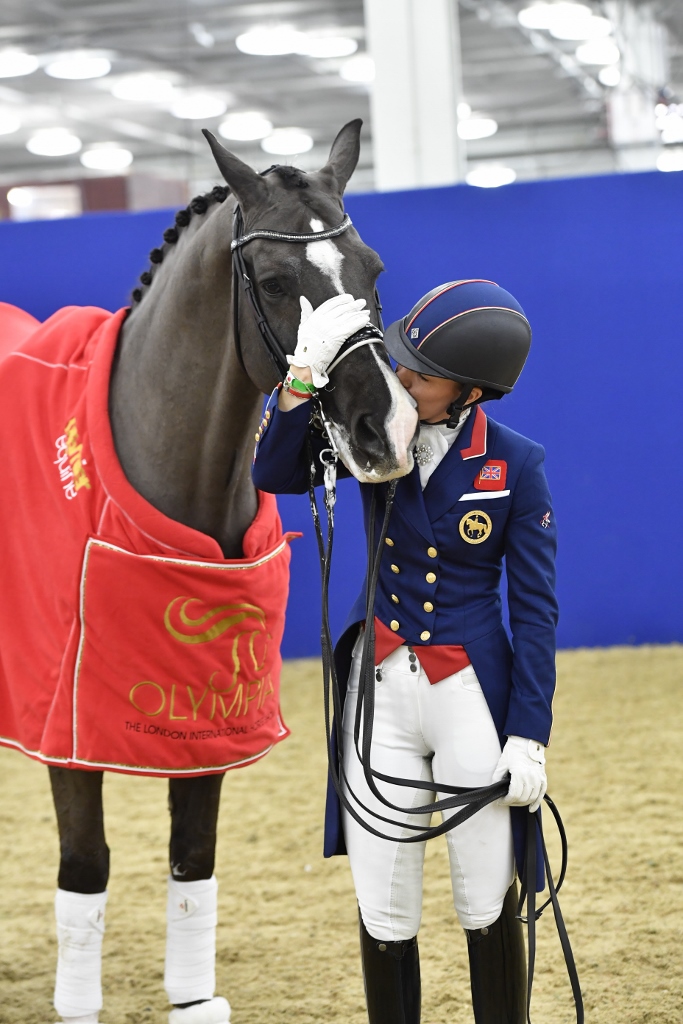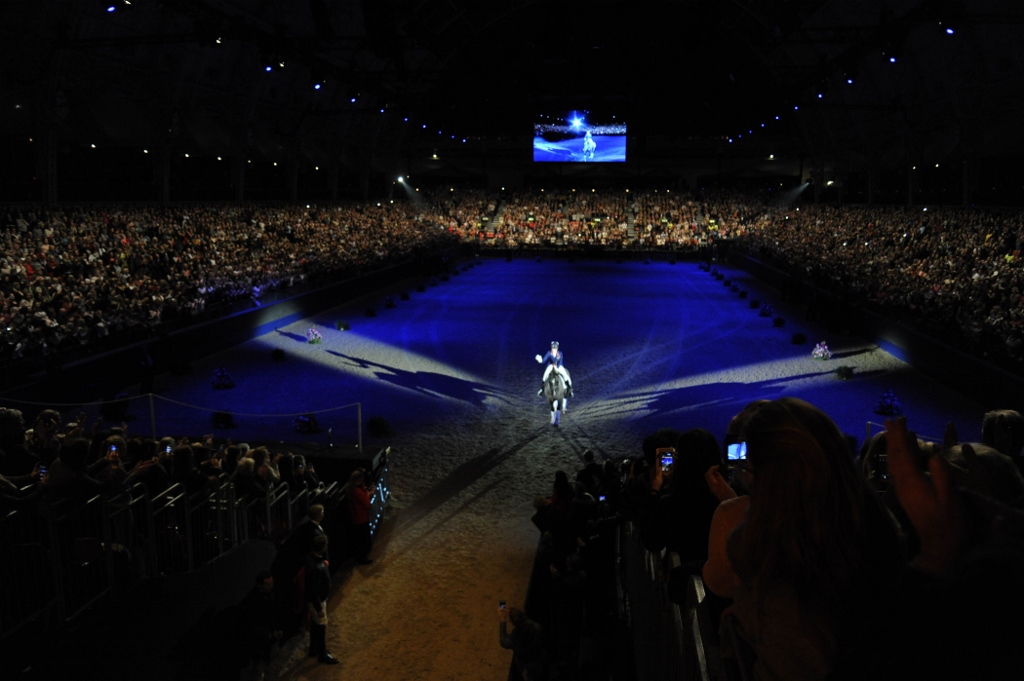
Valegro and Charlotte. Photo by Kit Houghton, courtesy of Revolution Sports and the Olympia Horse Show.
We’re venturing out of the open jump field for a moment to dip our toe in the big white sandbox and acknowledging the end of one of the most powerful equine careers of the modern era. Last night at Olympia, two-time Olympic dressage gold medalist and record holder Valegro was retired at a ceremony by part-owner Carl Hester, groom Alan Davies, and the KWPN stallion’s longtime competitive partner, Charlotte Dujardin.
The pair absolutely revived, revolutionized, and redefined their sport at a most auspicious moment, and there’s something all of us can take away from that, whether we’re dressage fans or not.
We Must Challenge Seemingly Impossible Numbers. Valegro and Charlotte entered the scene on the heels of Totilas’s controversial exit from the sport – some said there would never be another combination like Totilas and Edward Gal, and then when the stallion was sold and failed to make waves with his new rider before suspending his career altogether, the whole sport was in flux and at risk of losing its fan base. Enter Charlotte and Valegro, who captured the hearts of nearly all equestrians and many who had never sniffed an arena in their life. Then they started obliterating records and earnings scores people didn’t think were possible. They propelled Dressage to a new level, and that’s something no sport should be afraid to explore.

Carl Hester, Valegro Charlotte and Alan Davies. Photo by Kit Houghton, courtesy of Revolution Sports and the Olympia Horse Show.
An Incredible Team is Everything. Much of the success of Charlotte and Valegro can be contributed to Carl Hester, Valegro’s part owner (along with Rowena Luard and Ann Barrott) and Charlotte’s trainer, who saw fit to put them together. Carl has a small but immaculate yard in the UK with a rather sizable staff who are utterly loyal and skilled, and everything runs like a well-oiled machine. Groom Alan Davies is hardly ever away from the horse. Without a team of miracle workers, even the most naturally talented cannot be the best.
Taking a Quiet Stand Can Change the World. Charlotte was one of three riders to break with tradition in 2012 and wear a helmet at the Olympics rather than a top hat, then went on to win a gold medal in it. The helmet made a huge statement and has continued to push the discussion of safety in all the equestrian sports.
The Partnership is Central to the Growth of Our Sport. In many ways, Charlotte and “Blueberry” have been something like a tabloid romance for the horse world. There is a trust and a chemistry which seems to permeate their every move together, and Charlotte’s words and actions are a constant reflection of that. In high performance show jumping, every rider must have such a vast string to be on the road at a four or five-star event every weekend, it’s harder to see the partnerships created. But if you reflect a moment on the individual podium in Rio this year, you’ll see three very powerful partnerships indeed: Nick Skelton and Big Star, Peder Fredricson and H&M All In, and Eric Lamaze and Fine Lady 5. Each of those partnerships is legendary and intimate, and each outshines better-ranked riders with bigger strings when the chips are down. We as a sport should endeavor to embrace, reward, and openly share the inner workings of these partnerships.
Dressage fan or not, we were all lucky to witness a powerful career that will have lasting effects on the equestrian sports for years to come, and we wish Blueberry and his connections all the best and a happy retirement to their central star.
Go Dressage, and Go Jumping.


